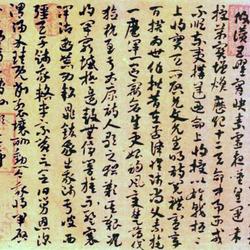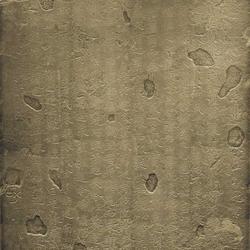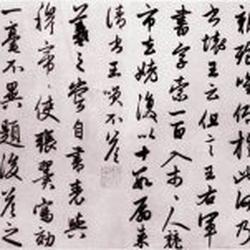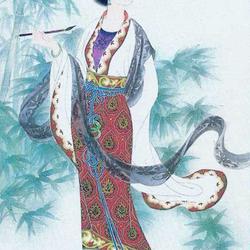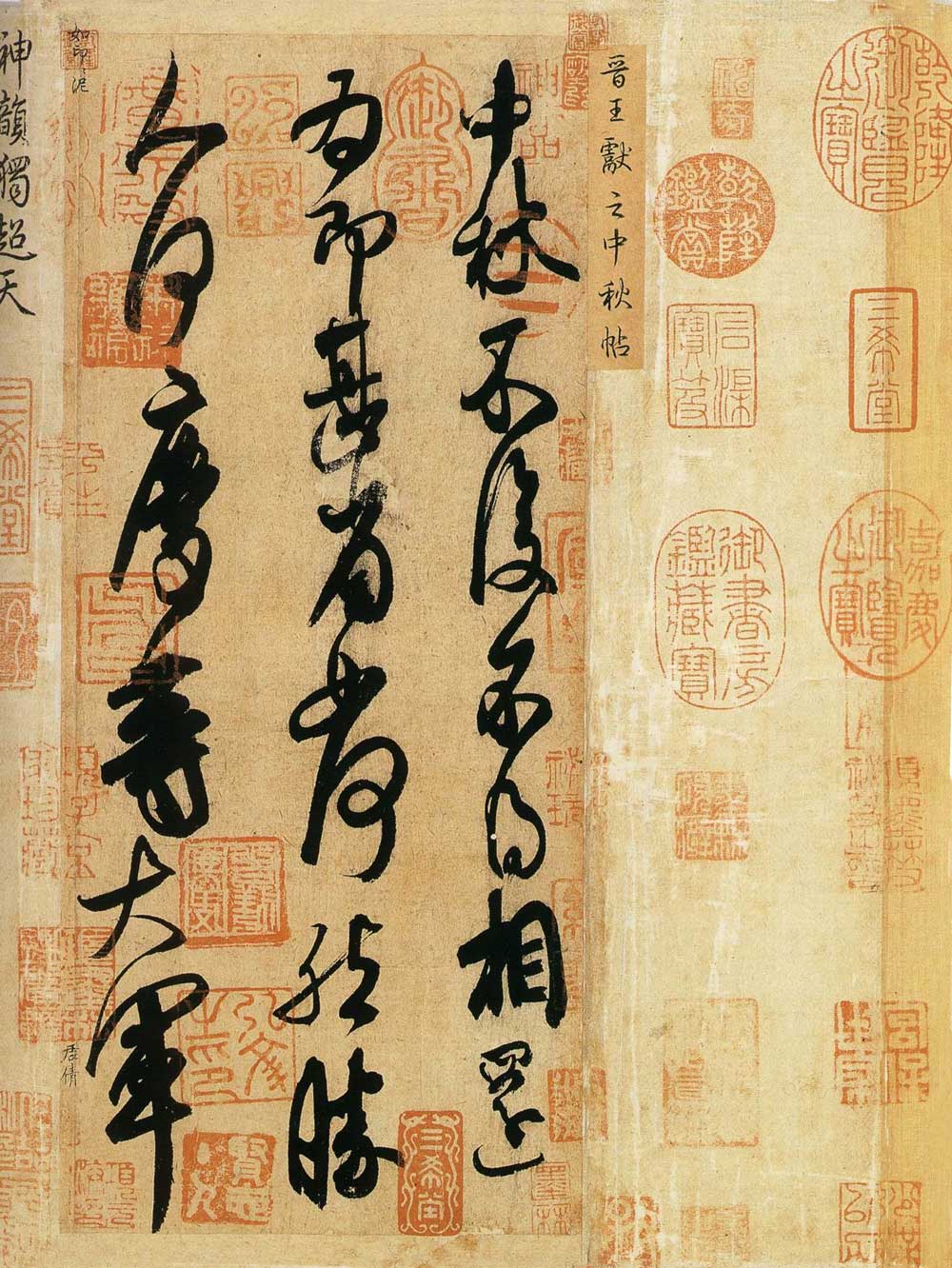
"Mid-Autumn Tie" in cursive script, paper, collected by the Palace Museum in Beijing. It is said to be a book presented by the King of Jin Dynasty. Hand scroll, 27cm in length and 11.9cm in width.
"Mid-Autumn Tie" is a famous ancient calligraphy work. It was once praised as one of the "Three Treasures" by Hongli, Emperor Gaozong of the Qing Dynasty (Emperor Qianlong), which means a rare treasure. 3 lines of running script, 22 characters in total. Explanation: "The Mid-Autumn Festival will no longer be able to return to the world. How can the province defeat He Qing and other large armies." No signature.
"Mid-Autumn Tie" is an incomplete copy of "Baojin Zhai Fa Tie" and "December Cut Tie". The original post contains the six words "December Cut to No" before "Mid-Autumn Festival". The post was written on bamboo paper. This kind of paper was not available in the Eastern Jin Dynasty and did not appear until the Northern Song Dynasty. It can be seen from the writing brushes that the brushes used are soft and unintentional brushes, while the Jin Dynasty used hard-intentional brushes, which have poor water absorption. The lifting, pressing and turning of the brush are often not flexible and free, and there are often hairs, so the brush is so plump. It is impossible to write the effect of being round and mature, having coherent lines, flowing Qi, and being free and elegant. Wu Sheng's "Da Guan Lu" of the Qing Dynasty says: "The calligraphy on this calligraphy is ancient and thick, and the black color is fresh and smooth, but it is as big as a fat maidservant. Although it is not a hook, it is probably imitated by people from the Song Dynasty." According to the research of contemporary calligraphy and painting connoisseurs, most people think it is from the Song Dynasty. Wherever Mi Fu comes, it is equally precious.
The front of the volume is preceded by the two characters "Zhibao" written in running script by Hongli, Emperor Gaozong of the Qing Dynasty. Across the water in front is a section inscribed by Emperor Qianlong. On the upper right side of the post text is the line "Mid-Autumn Festival Posted by the King of Jin" inscribed by Emperor Qianlong. At the back of the volume are inscriptions and postscripts by Dong Qichang and Xiang Yuanbian of the Ming Dynasty and Qianlong of the Qing Dynasty, including a section each of paintings by Emperor Qianlong and Ding Guanpeng. On the front and back of the volume and across the water are seals from the "Xuanhe" Neifu of Beijing in the Song Dynasty, the Neifu of the Southern Song Dynasty, Xiang Yuanbian, Wu Ting of the Ming Dynasty, and the Neifu of the Qing Dynasty. "Xuanhe Shupu" of the Song Neifu, "Qinghe Painting and Calligraphy Boat" by Zhang Chou of the Ming Dynasty, "Qinghe Seeing and Hearing Table", "Qinghe Secret Box Table", Wang Diyu's "Coral Net Book Postscript", Qing Gu Fu's "A Spectacular Life", Bian Yongyu's " It is recorded in books such as Shigutang Calligraphy and Painting Collection, Wu Sheng's Daguan Lu, Neifu's Shiqu Baoji? First Chapter.
This post was collected by the Xuanhe and Shaoxing Neifu of the Song Dynasty, Xiang Yuanbian of the Ming Dynasty, and the Neifu of the Qing Dynasty. During the Republic of China, Puyi took him out of the palace and dispersed among the people. Before the founding of the People's Republic of China, it was pawned to a foreign bank in Hong Kong together with Wang Xun's Boyuan Tie. At the end of 1951, when the pawn period was about to expire, someone abroad tried to buy it. After hearing the news, Premier Zhou Enlai immediately instructed the relevant departments to buy it back and put it in the Palace Museum. (Writer: Li Yanxia) Information comes from the website of the Palace Museum
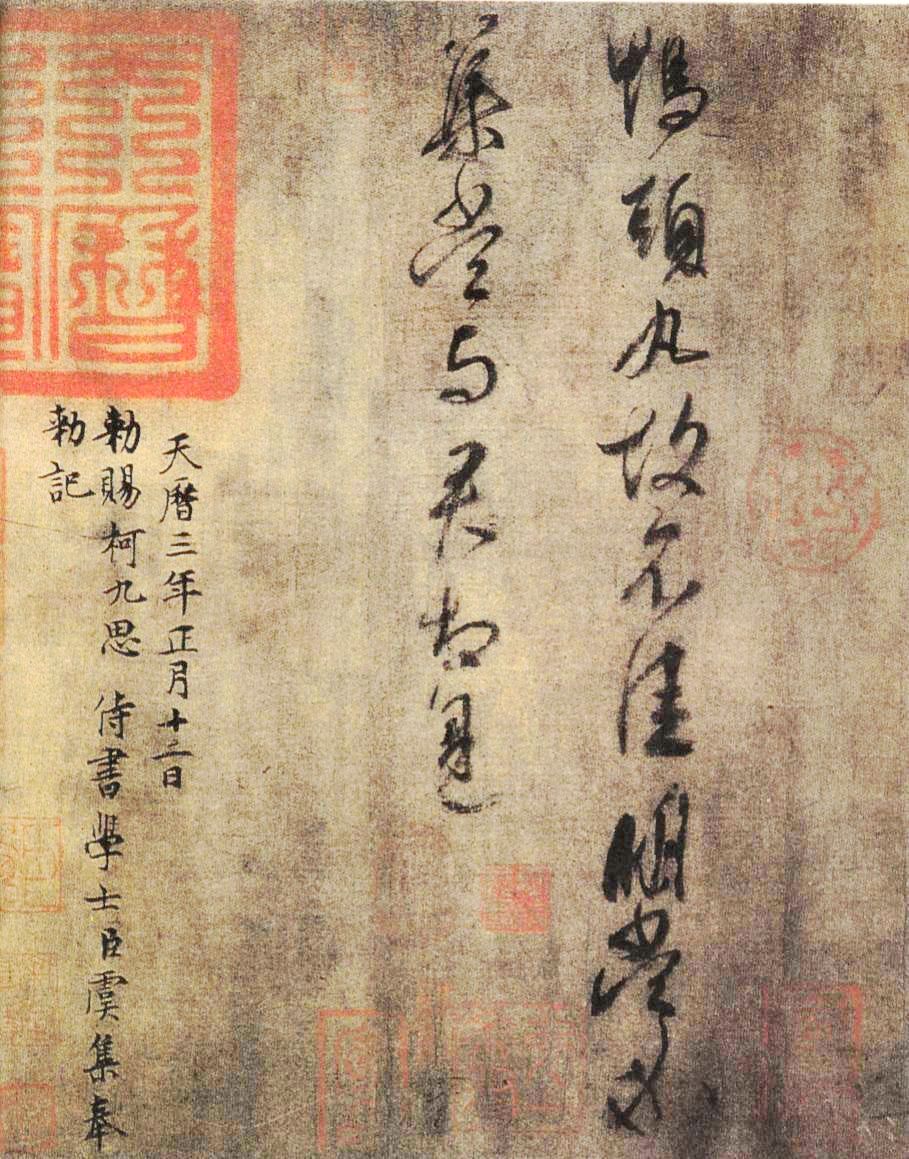
The original copy of "Yatouwan Tie" is now in the Shanghai Museum. Silk, length 26.1 cm, width 26.9 cm.
Two lines and fifteen characters, it is a note written by Wang Xianzhi to a friend. Post: "Duck head pills, so they are not good. I will gather them tomorrow and see you."
The writing is full of ups and downs, full of passion, beauty and elegance, without any mundane atmosphere. Wu Qizhen's "Calligraphy and Painting Notes" said that "the calligraphy is elegant and upright, majestic and astonishing, with natural and interesting features, and it is a supreme quality".
"Yatou Wan Tie" is written in dry and moist ink. Dryness and moistness are mixed together, moistness is used to obtain beauty, and dryness is used to obtain danger. The whole post is dipped in ink twice, one sentence at a time. The ink color changes from moist to dry, from thick to light, and the ink color is distinct. This shows the rhythmic ups and downs and natural changes in the charm of the whole post. In history, some people believed that this post was written by Wang Xizhi, but most people today believe that it was written by Wang Xianzhi.
This post bears the seals of "Xuanhe" and "Zhenghe" during the reign of Emperor Huizong of the Song Dynasty, and is a well-circulated work by Wang Xianzhi. In the Song Dynasty, it was engraved with "Chunhua Pavilion Tie", "Daguan Tie" and "Jiang Tie". In the Ming and Qing Dynasties, it was also engraved with "Yuqingzhai Fa Tie", "Yuyantang Tie", "Baoxiantang Tie" and "Linsu Garden Tie". "wait.
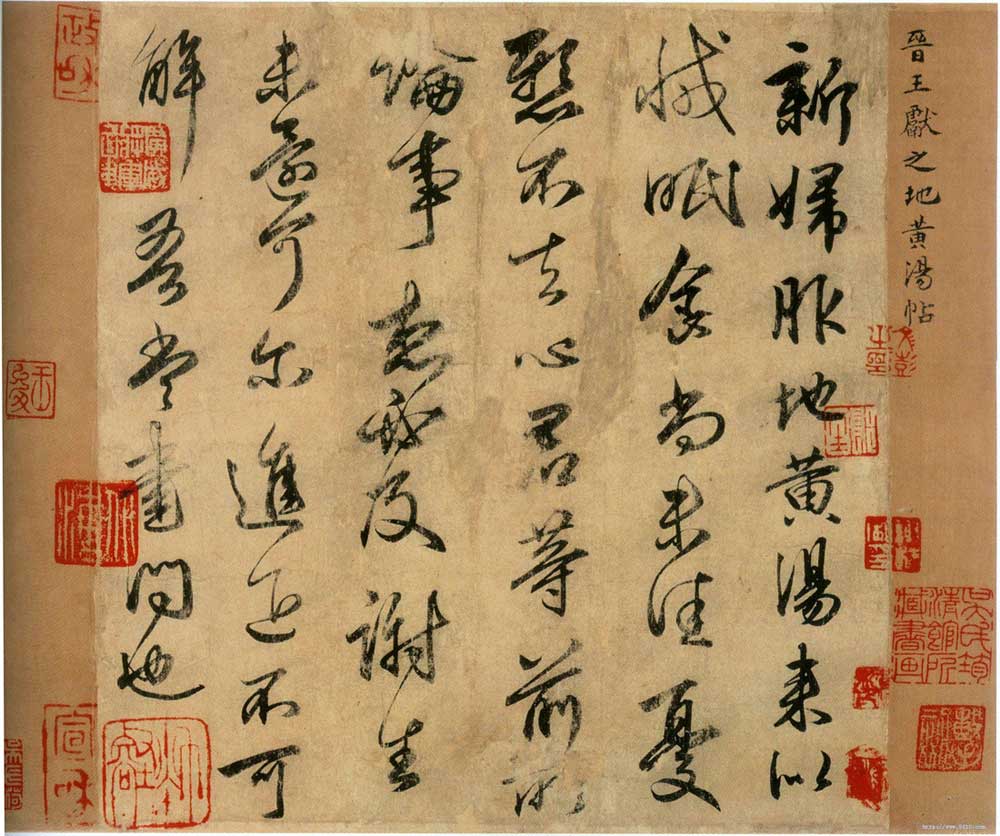
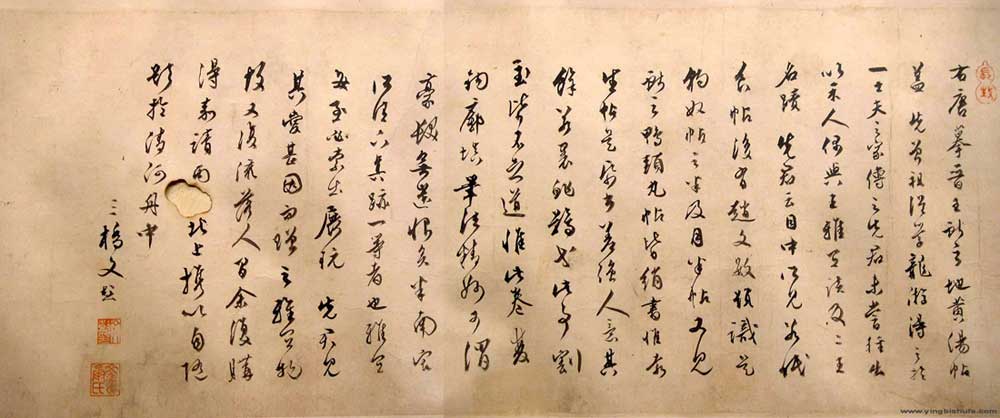
The bride's rehmannia glutinosa decoction is a Tang Dynasty copy. Paper, length 25.73 cm, width 24.0 cm. Collection of the Taito Ward Calligraphy Museum, Tokyo, Japan.
Dihuang Tang is the name of a Chinese medicine. This is the official document about the medicine, which is the same as Wang Xianzhi's "Yatou Wan Tie". Wang Xianzhi's original calligraphy has not been passed down to this day. Several types of ink writing have been handed down as models, one of which is this "Rehmannia Tang Tie".
The whole writing style is flexible and flexible, calm and solemn, and written in one breath. Originally kept in the Imperial Palace of the Song Dynasty, it was inscribed by Zhao Gou, Emperor Gaozong. It is collected in the tenth volume of "Chunhua Pavilion Tie". After being collected by Jia Sidao, Wen Zhengming, Wang Chong, and Wen Peng in the Ming Dynasty, and Sun Chengze, Wu Rongguang, and Luo Zhenyu in the Qing Dynasty, they returned to Zhongcun Buzi through Wenqiu Hall on December 3, the 44th year of Meiji (1911). (1866-1943) all. The volume does not include inscriptions and postscripts on the records of Wen Peng, Chang Sheng, Cheng Prince and Ying He. When Wu Rongguang received this calligraphy, he engraved it on the collected calligraphy "Yunqing Guantie".
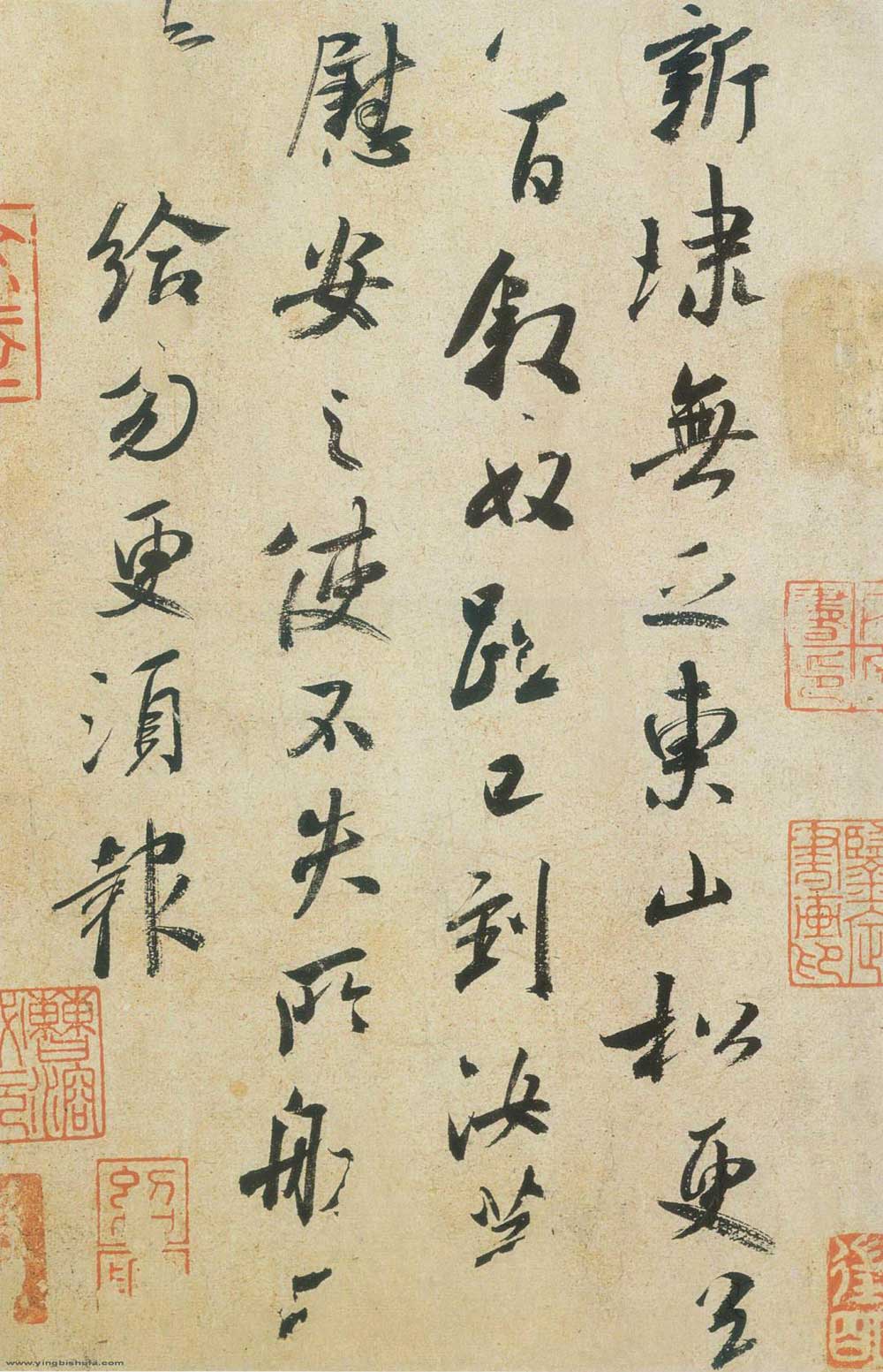
"Dongshan Songtie", Jin Dynasty, written by Wang Xian, on paper, cursive script, 22.8cm in length and 22.3cm in width. It is said to be a copy of Mi Fu.
Explanation: There is no shortage of new products, and eight hundred new pine trees are sent to Dongshan. Xu Nu has arrived, please comfort him so that he will not lose his place. □□□Give it, don’t pay more
This post has no signature or postscript. The seals in the collection include the "Shaoxing" consecutive seals of the Southern Song Dynasty, the "Neifu Shushu Seals", and the seals of Mingwen Zhengming, Liu Chengxi, Wu Ting and Cao Rong of the Qing Dynasty. There are also two ancient seals (the text cannot be identified). The original seals of Qianlong's inner palace of the Qing Dynasty and the Qianlong's inscriptions have been scraped off. "Dongshan Songtie" is a letter written by Wang Xianzhi. It is a broken letter, with four characters erased. "埭" (sound band) means a dike that blocks water. "Eight hundred more pine trees will be sent to Dongshan" should be a sentence, which means that eight hundred more pine trees need to be planted for embankment and beautification purposes. The writing in this post is whirling, full of various expressions, and elegant.
It is recorded in "Xuanhe Shupu" and "Zhongxing Guange Lu" of the Song Dynasty, Dong Qichang of the Ming Dynasty "Rongtai Collection", Sun Chengze of the Qing Dynasty "Gengzi Xiao Xia Ji", and An Qi's "Mo Yuan Hui Guan". It was engraved into "Yu Qingzhai Dharma Tie" by Wu Ting in the Ming Dynasty, "Xihongtang Dharma Tie" by Dong Qichang, and "Sanxitang Dharma Tie" in the Qing Dynasty. (Writer: Li Yanxia) Information comes from the website of the Palace Museum
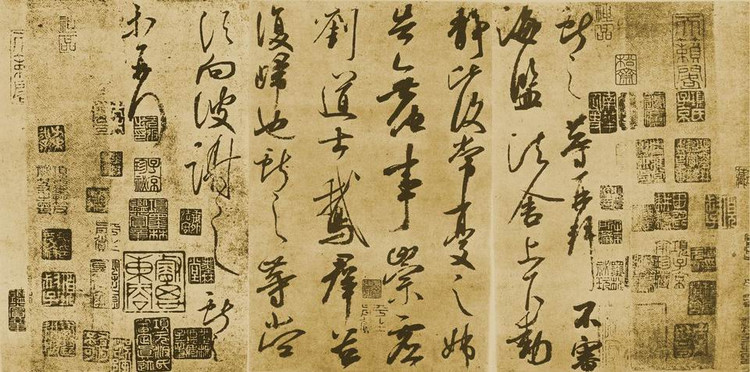
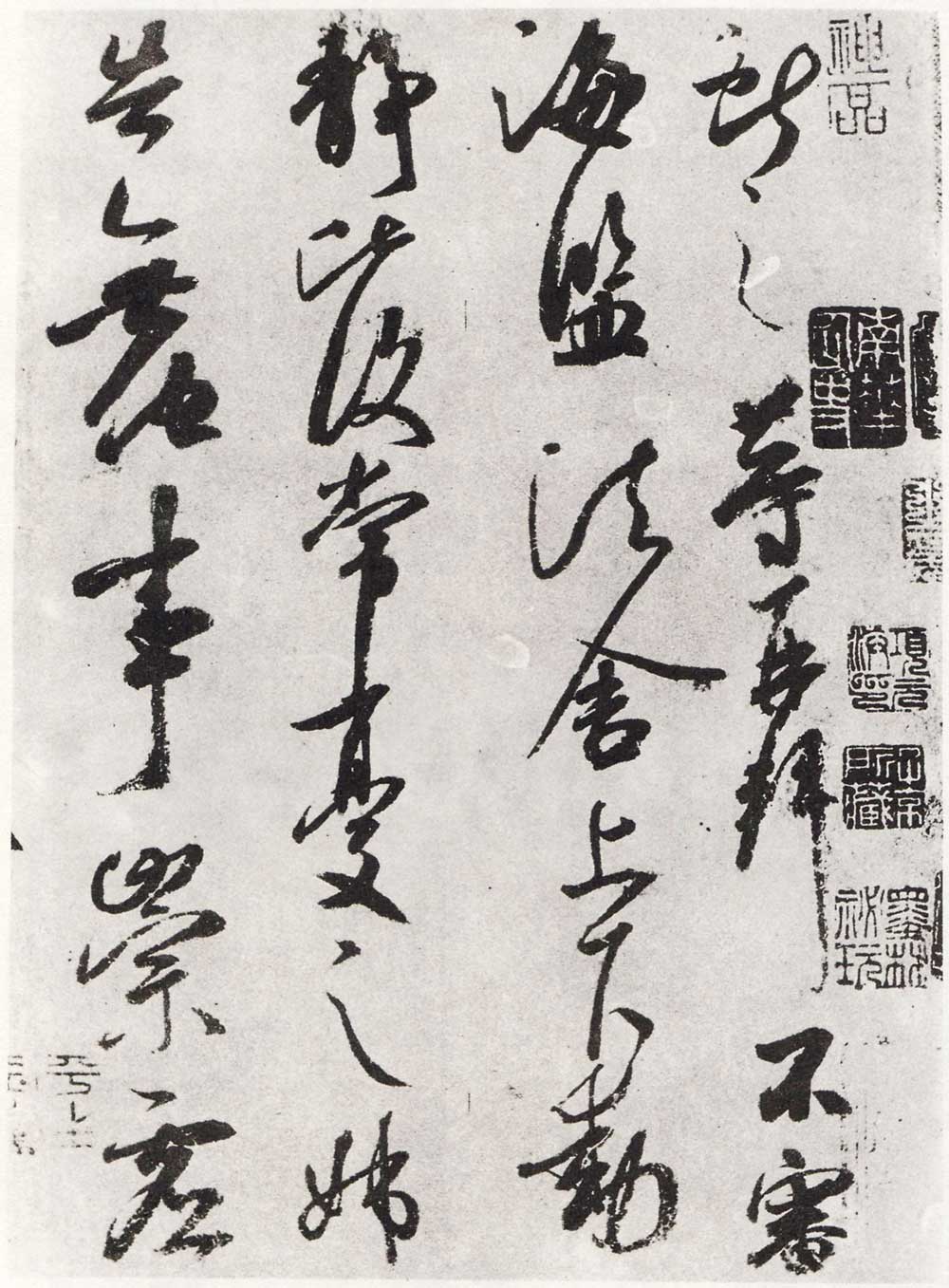
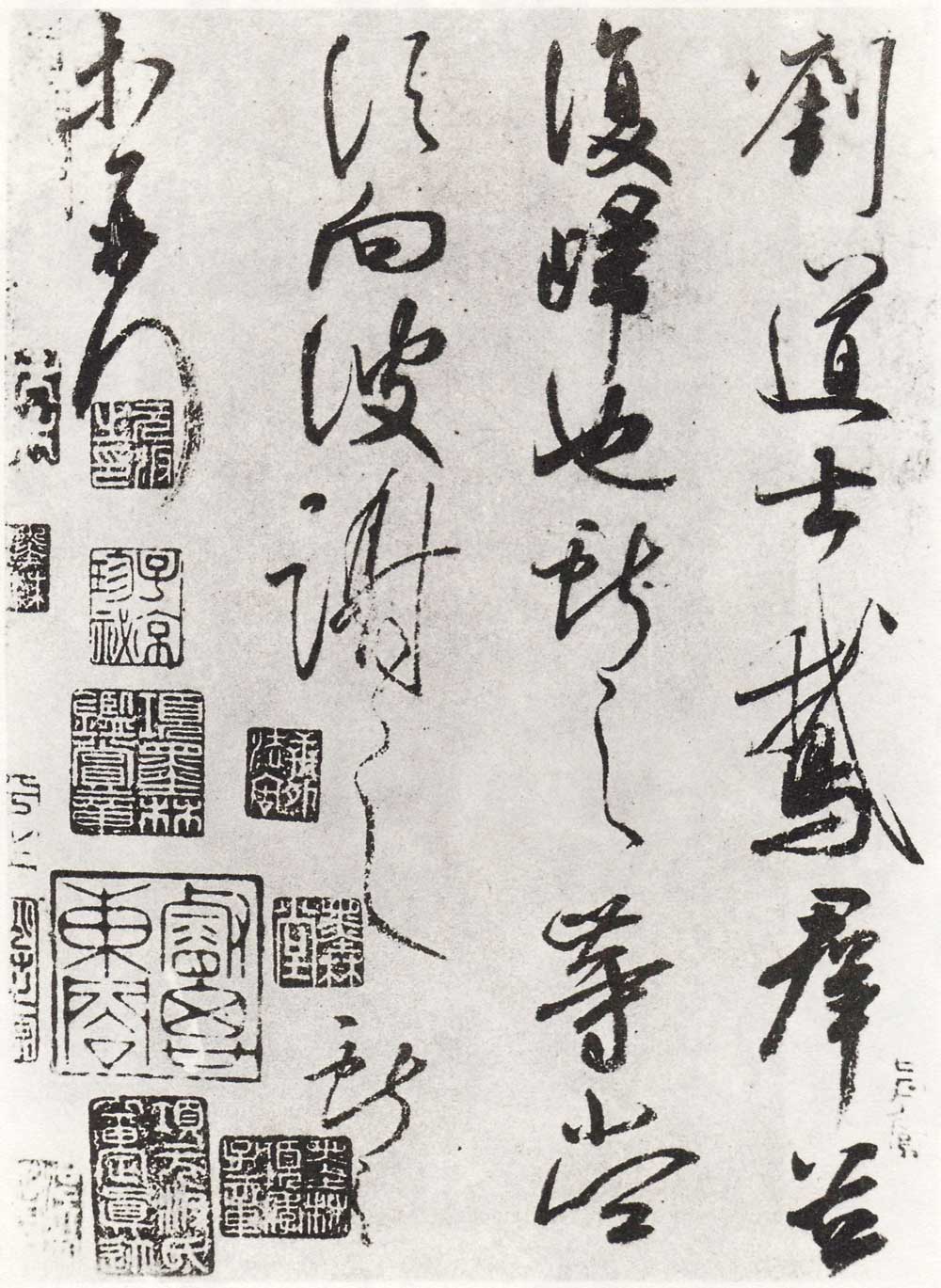
"Goose Qun Tie" is a cursive calligraphy work written by Wang Xianzhi of the Eastern Jin Dynasty. This calligraphy was passed down to the Lin edition of the Song Dynasty.
"Chunhua Pavilion Tie" was engraved in the Song Dynasty. The original ink mark cannot be verified, but there is a copy by Mi Fu from the Song Dynasty. Many famous calligraphers in the past dynasties copied it, such as Xian Yushu in the Yuan Dynasty, Xing Dong and Wang Duo in the Ming Dynasty, and Fu Shan in the Qing Dynasty.
Original text: Offer it before worshiping: If you don’t care about the movement of sea salt and houses, you will always worry about it. My sister has nothing else to do. Chongxu Liu Taoist geese returned together. You should thank him for your donation. Dedicate it and worship later
The two posts, "Ge Qun Tie" and "Yatou Wan Tie", have similar grass and lines and change according to the mood. They do not stick to the old routine. The strokes are continuous and belong to each other. They are unrestrained and unrestrained, which reflects the bold and uninhibited style of Xian. A high degree of combination of temperament and skill. "Gese Qun Tie" This post is said to have been copied in the Song Dynasty. The stippling is like upright and crab claw hooks . The characters are strong and proud, and the center of gravity is swaying downwards, which is very consistent with the Mi Fu family's method. The weight and weight of the lines and the size of the characters are all very different. The vertical and interactive Gestures make the formal composition full of vertical penetration and horizontal development tension. The composition is open and closed, and the luck of the numbers is amazing.

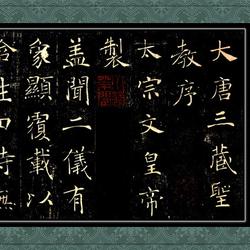
![Mi Fu's pinnacle book Bao Zhao [Fu of Wuhe]--Straightforward and unrestrained regular script reference](https://www.regularcalligraphy.com/uploads/20217/22/thumb_1223c7c1e9cb2b7b.jpg)
